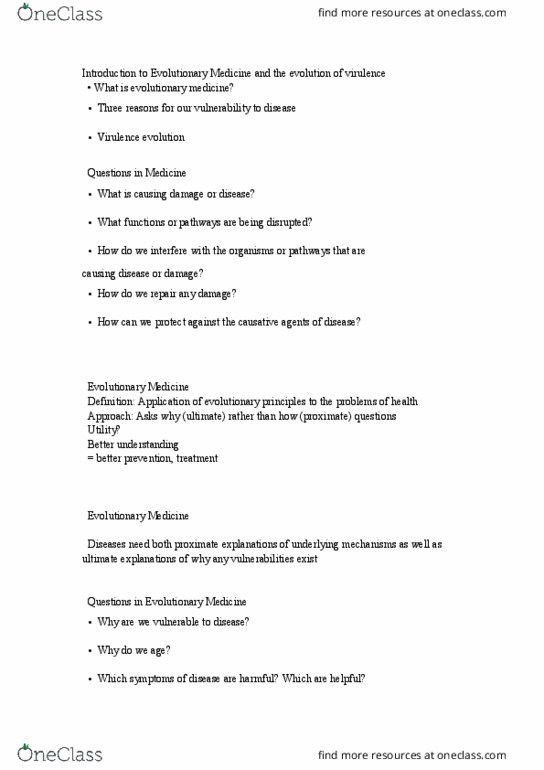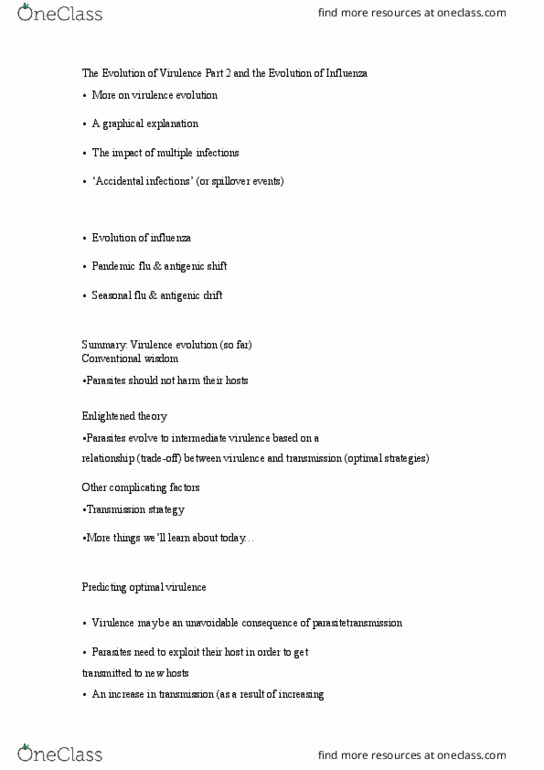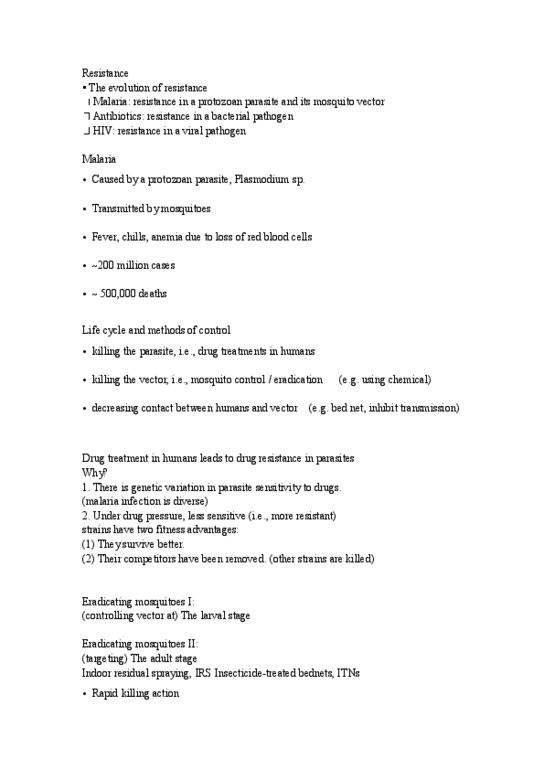BIO220H1 Lecture Notes - Lecture 8: Antigenic Drift, Flu Season, Antigenic Shift
BIO220H1 verified notes
8/18View all
Document Summary
Conventional wisdom: parasites should not harm their hosts. Enlightened theory: parasites evolve to intermediate virulence based on a relationship (trade off) between virulence and transmission (optimal strategies) Other complicating factors: transmission strategy, more things we"ll learn about today . At low replication rates, marginal gain > marginal cost. At high replication rates, marginal gain < marginal cost. At intermediate replication rates, marginal gain = marginal cost. The predictions we just made implicitly assume that hosts are infected with a single parasite genotype. But for some diseases, infection with multiple strains is common e. g. , malaria infections in humans (individua affected by multiple strains accumulate many parasite genotypes) Multiple infections & the tragedy of the commons. Theory predicts that multiple infections select for increasing virulence. More virulent (host is more sick, more anemic) Less virulent (host is less sick, less anemic) The more virulent strains do better in competition (multiple infections)




